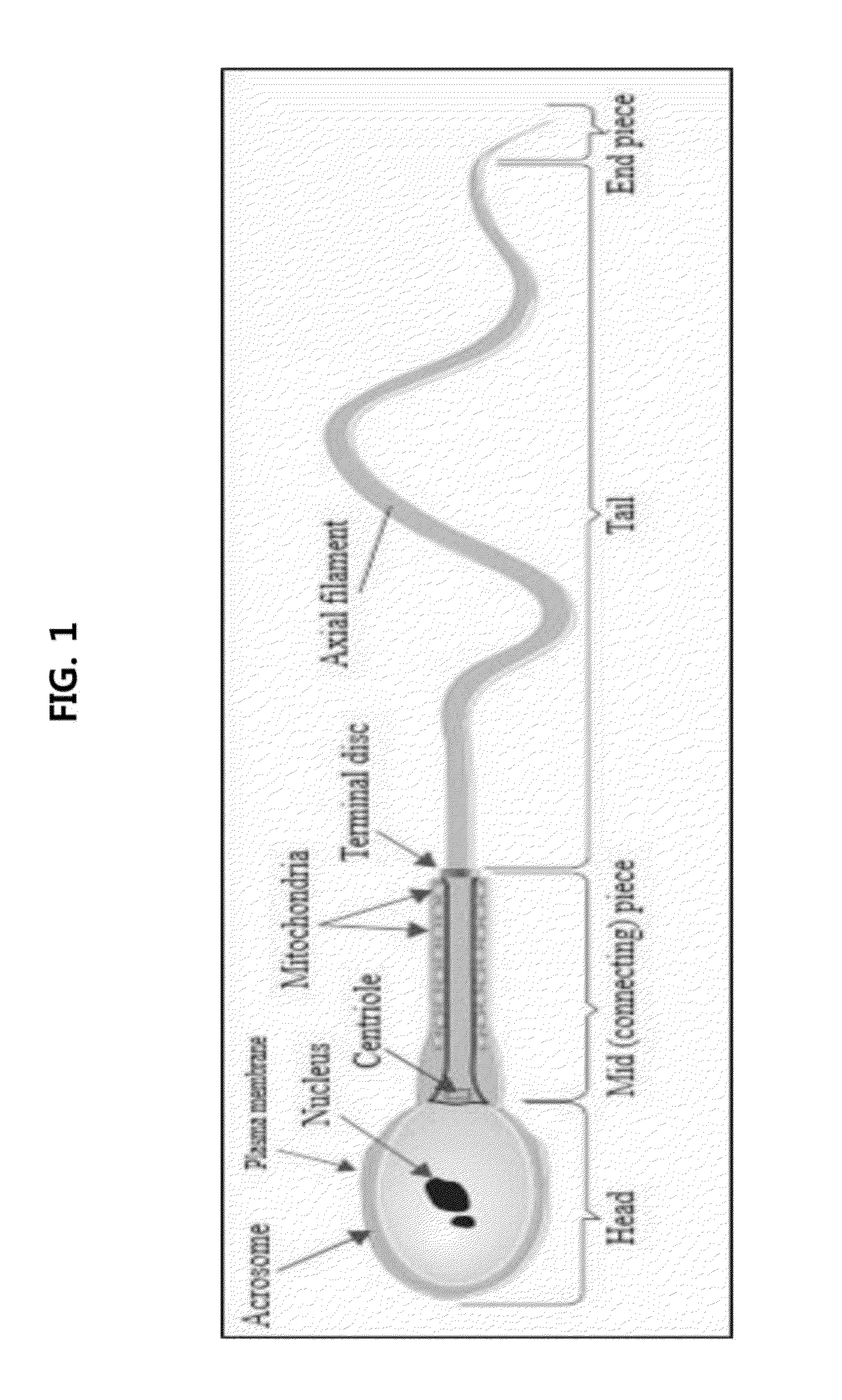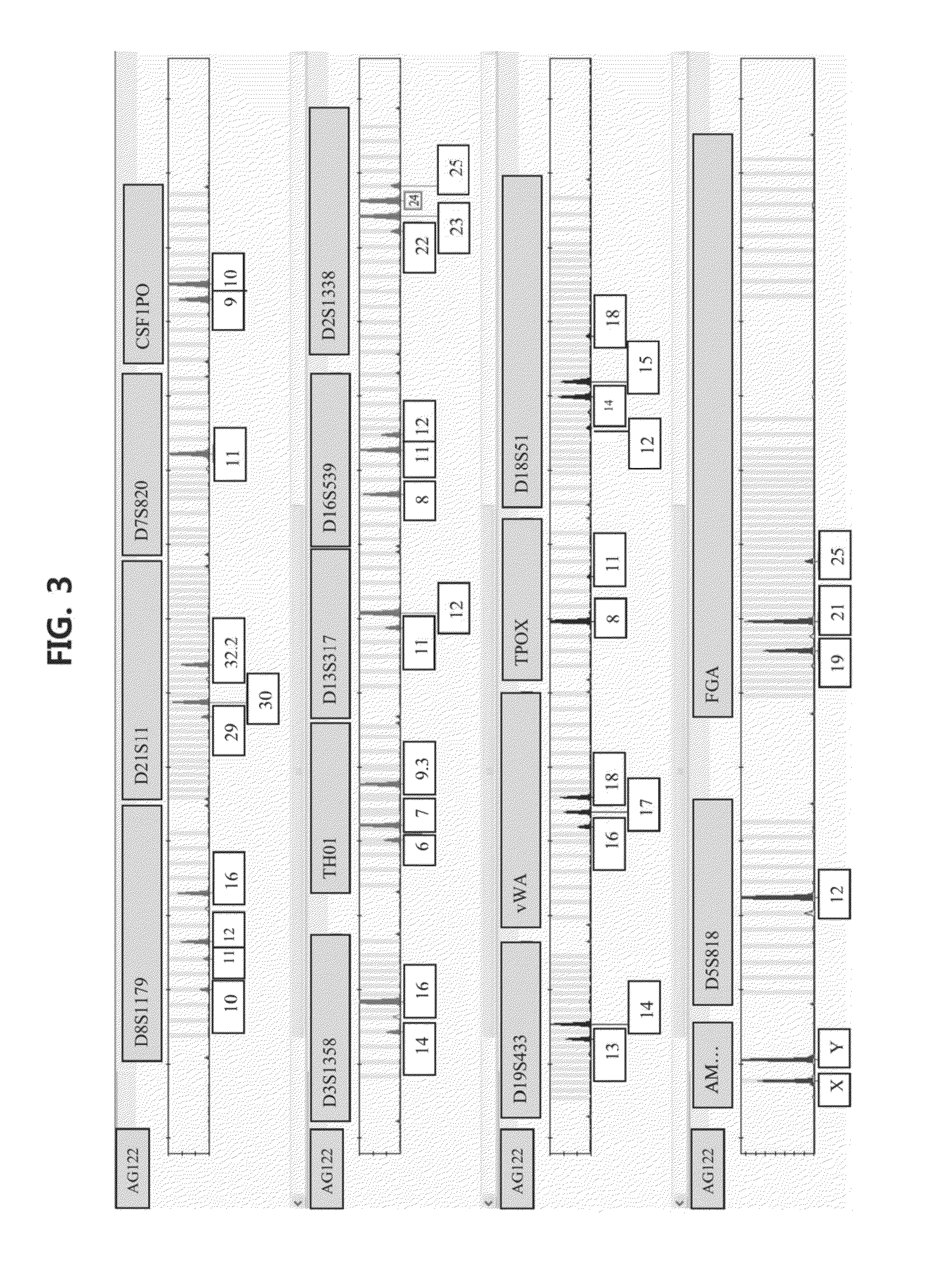Method, apparatus and kit for human identification using polymer filter means for separation of sperm cells from biological samples that include other cell types
a technology of sperm cells and filter means, applied in the field of methods, can solve problems such as reducing yield, and achieve the effect of high throughput processing and easy adaptation to automation
- Summary
- Abstract
- Description
- Claims
- Application Information
AI Technical Summary
Benefits of technology
Problems solved by technology
Method used
Image
Examples
example 1
Detailed Extraction Protocol Showing the Efficiency of Capturing Intact Sperm Cells on Nanofiber Filters, Recovery of Digested Sperm Cell DNA, and Evaluation of the Utility of the Method for Forensic DNA Analysis of Dried Mock Vaginal Swabs
[0077]This Example demonstrates the efficacy of nanofiber filters for clean separation of epithelial cells from sperm cells found in a simulated forensic case sexual assault swab. Nanofiber filters of polycaprolactone nanofiber extracellular matrix (ECM PCL) having two different thicknesses, 500 μm and 600 μm (hereinafter ‘Fiber 1’ and ‘Fiber 2’, respectively), were used. A comparison of the efficiency of separation and recovery of sperm DNA by the two filters having different thicknesses is provided. The two types of nanofiber filters were evaluated using a simulated rape kit swab for the efficiency as well as the efficacy of separation of the sperm and non-sperm cell mixture by nanofiber filters.
[0078]A simulated rape examination swab was create...
example 2
Analysis of Isolated Sperm Cell DNA and Epithelial Cell DNA Using a Forensic Stir DNA Analysis Kit
[0102]The recovered DNA was amplified using the AmpFSTR® Identifier® Plus PCR Amplification Kit following the manufacturer standard DNA analysis protocols. The extraction control, a negative control and a positive control DNA were analyzed with the isolated sperm cell DNA and epithelial cell DNA samples. The profiles of the known reference samples were generated as well as the profiles of the mixture samples prior to differential digestion and subjected to nanofiber filter separation as control results for comparison purposes.
[0103]Table 2 shows the DNA profiles obtained from samples A and B using the Fiber 2 nanofiber filter and Table 3 shows the DNA profiles obtained from samples A and B using the Fiber 1 nanofiber filter. From this data, it is evident that the corresponding donor is correctly detected as the major component of each respective fraction irrespective of the fiber used (...
PUM
| Property | Measurement | Unit |
|---|---|---|
| diameters | aaaaa | aaaaa |
| thickness | aaaaa | aaaaa |
| thickness | aaaaa | aaaaa |
Abstract
Description
Claims
Application Information
 Login to View More
Login to View More - R&D
- Intellectual Property
- Life Sciences
- Materials
- Tech Scout
- Unparalleled Data Quality
- Higher Quality Content
- 60% Fewer Hallucinations
Browse by: Latest US Patents, China's latest patents, Technical Efficacy Thesaurus, Application Domain, Technology Topic, Popular Technical Reports.
© 2025 PatSnap. All rights reserved.Legal|Privacy policy|Modern Slavery Act Transparency Statement|Sitemap|About US| Contact US: help@patsnap.com



